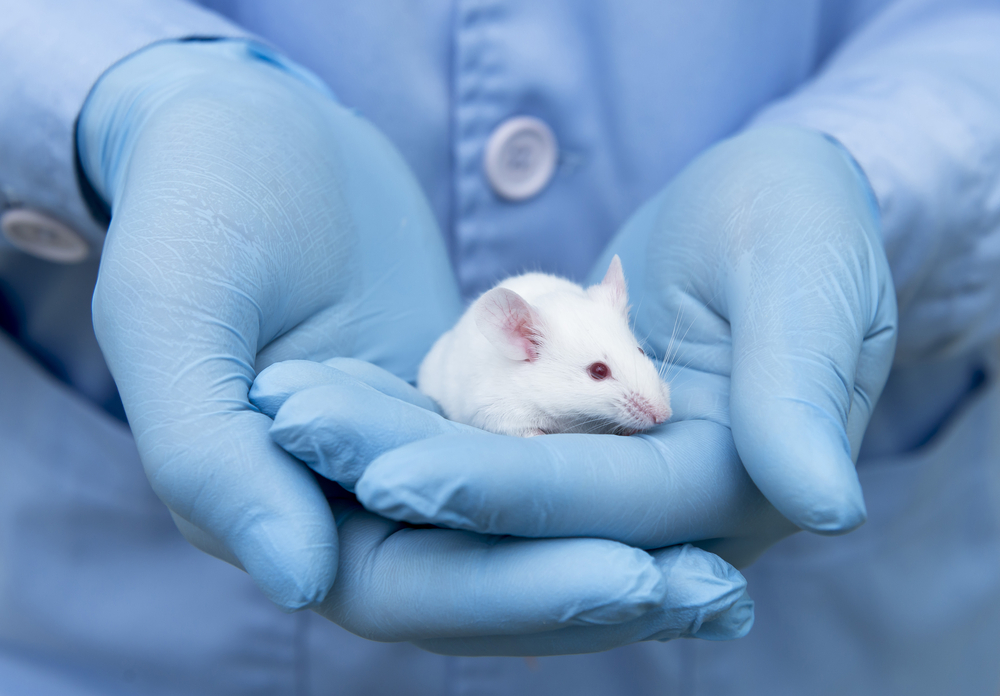Hydrogel-based Delivery of IL-10 Prevents Lung Fibrosis, Mice Study Finds
Written by |

Linking the small antifibrotic protein interleukin-10 (IL-10) to a hydrogel vehicle allows safe delivery to the lungs of animal models of pulmonary fibrosis. This formulation could be a potential therapy for people with idiopathic pulmonary fibrosis (IPF).
The study, “Hydrogel-based delivery of Il-10 improves treatment of bleomycin-induced lung fibrosis in mice,” was published in the journal Biomaterials.
Treatment strategies for IPF include slowing down the disease’s progression with antifibrotic agents, such as Ofev and Esbriet, as well as oxygen therapy. Still, the median patient survival is poor, and new approaches are needed to improve the clinical outcome of IPF patients.
IL-10 is a small signaling protein that has anti-inflammatory and antifibrotic effects, making it a promising future therapy for IPF. But IL-10 has a short half-life (1–2 minutes in vivo), and requires a vehicle (a linked non-active solvent) that can safely transport the protein into the lungs.
For this, researchers have developed a so-called hydrogel — based on the blood-thinning medication heparin and the carbohydrate hyaluronan — that can link to IL-10 and deliver it to the lungs.
The study tested the hydrogel-linked IL-10 (HH-10) and investigated its delivery properties, safety, and effects on fibrosis both in cells and animal models.
Researchers first analyzed the effect of IL-10 on the activity of TGFβ-1, a profibrotic cell-signaling protein that is upregulated in IPF.
Connect with other people and share tips on how to manage PF in our forums!
To do so, they collected fibroblasts (cells involved in the development of fibrosis by producing collagen, among other factors) from the lungs of healthy individuals and those with IPF, exposed them to TGFβ-1, and subsequently treated them with IL-10.
Exposure to TGFβ-1 before IL-10 treatment increased the production of both collagen-I and f-actin (markers of fibrosis) in healthy cells. These fibroblasts showed a significant decrease of both fibrotic markers upon treatment with IL-10.
In contrast, due to unaffected f-actin levels upon TGFβ-1 exposure in IPF fibroblasts, IL-10 did not further reduce its baseline levels. However, researchers found that, as in fibroblasts from healthy individuals, collagen-I levels were increased by TGFβ-1 in IPF fibroblasts, and subsequently lowered upon IL-10 treatment.
The team next tested the antifibrotic effects of HH-10 on STAT3, a protein that can suppress fibrosis and inflammation upon IL-10 signaling. They found that fibroblasts exposed to HH-10 showed relocation of STAT3 in the cell nucleus, indicating an activation of the protein.
Then, the effects of HH-10 and IL-10 were tested in mouse models, in which fibrosis was induced with the chemical bleomycin. Researchers observed that mice tolerated the hydrogel well, and that it effectively reached the lungs.
Animals were then treated with HH-10 one day (testing prevention) or one week (testing treatment).
Results showed that in terms of prevention, HH-10 treatment resulted in a significantly lower mortality, compared with mice treated with an inactive buffer. Further analysis of the animals’ lungs showed significant reduction of lung fibrosis, seen by lowered α-smooth muscle actin, collagen levels, and Ashcroft scores, which measure the severity of fibrosis.
Compared with buffer treatment and treatment with IL-10, HH-10 treatment resulted in lower levels of fibrosis markers.
Similar to the prevention experiment, daily HH-10 administration one week after fibrosis induction in mice resulted in reduced lung lesions, α-smooth muscle actin levels, and Ashcroft scores compared with buffer treatment. Although collagen levels did not vary between the groups, the effect of HH-10 was comparable to that of IL-10 treatment.
Final analyses of the TGFβ-1-activated protein Smad3, which increases collagen and smooth muscle actin levels, showed reduced activation of Smad3 upon HH-10 treatment in both the prevention and treatment experiment settings.
Overall, the results suggested that HH-10 can prevent and possibly reverse fibrosis by controlling TGFβ-1 activation of fibroblasts.
“We propose that our HH-10 formulation is an effective method to deliver therapeutic amounts of IL-10 directly to the lung via inhalation,” the researchers said. “We believe that HH-10 could be applied to management of IPF alone or in combination with available therapies resulting in preservation of pulmonary function and improved outcomes.”






